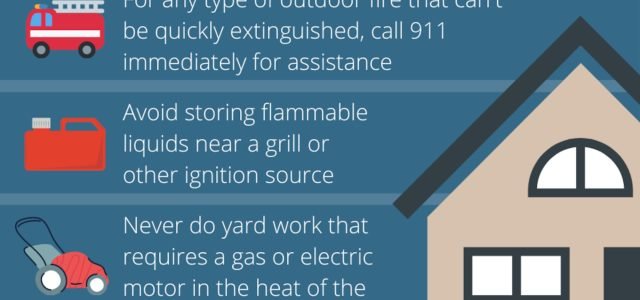When it comes to home exteriors, vinyl siding has become a popular choice for many homeowners. It offers a range of benefits, such as durability, low maintenance, and cost-effectiveness. However, one question that often comes up is whether vinyl siding is flammable. In this article, we will explore whether vinyl siding is indeed flammable or not.

Credit: www.safety.af.mil
The Composition of Vinyl Siding
Vinyl siding is primarily composed of polyvinyl chloride (PVC) resin, which is a synthetic plastic material. PVC is known for its excellent fire resistance properties. The material itself is self-extinguishing, meaning it does not support combustion. This makes vinyl siding inherently flame-retardant.
Flammability Standards
Vinyl siding is subject to various industry standards and regulations to ensure its safety. The American Society for Testing and Materials (ASTM) has specific standards in place to determine the flammability of building materials. Vinyl siding products go through rigorous testing to meet these standards.
When tested for flammability, vinyl siding is classified as a Class A material. This is the highest rating, indicating the highest level of fire resistance. Class A materials are considered to have excellent resistance to fire and can withstand high levels of heat without igniting or spreading flames.
Heat Resistance of Vinyl Siding
In addition to being flame-retardant, vinyl siding also has good heat resistance. It can withstand high temperatures without melting or warping, which further reduces the risk of fire hazard. This attribute is especially important in regions with extreme weather conditions.
When exposed to direct flame, vinyl siding may start to melt, but it will self-extinguish once the flame source is removed. It does not contribute to the spread of fire or release toxic gases during combustion.

Credit: www.cbc.ca
Other Factors to Consider
While vinyl siding itself is not flammable, it is important to consider other factors that can contribute to the flammability of your home. For example, if there are easily ignitable materials near the siding, such as dry leaves or wood piles, the risk of fire may still be present. Additionally, electrical hazards, like faulty wiring, can also pose a fire risk independent of the siding material.
It is essential to adhere to proper installation guidelines for vinyl siding. Improper installation or inadequate sealing can create gaps that allow fire to spread. Therefore, it is recommended to hire professional installers who follow industry best practices to ensure the siding is installed correctly and securely.
The Bottom Line
In conclusion, vinyl siding is not flammable and has excellent fire resistance properties. It is considered a safe choice for home exteriors. The material is designed to withstand high temperatures and does not contribute to the spread of fire. However, it is always important to take precautions and address any potential fire hazards outside of the siding itself.
Remember, when it comes to fire safety, it is crucial to have working smoke detectors and a well-maintained fire extinguisher in your home. Regularly inspect your siding for any signs of damage and ensure it is installed properly to maintain its fire-resistant properties.
Frequently Asked Questions Of Is Vinyl Siding Flammable? Protect Your Home From Fire Hazards
Q: Can Vinyl Siding Catch Fire Easily?
A: Vinyl siding has a high fire resistance rating, making it difficult to ignite and spread flames.
Q: Is Vinyl Siding A Safe Choice For Homes?
A: Vinyl siding is a safe and popular choice for homes due to its fire-resistant properties and durability.
Q: Does Vinyl Siding Emit Toxic Fumes When Burned?
A: When burned, vinyl siding may emit toxic fumes, so it’s important to prevent fires and avoid burning it.
Q: How Does Vinyl Siding Protect Against Fires?
A: Vinyl siding acts as a protective barrier against fires, as it is designed to resist ignition and slow flame spread.

